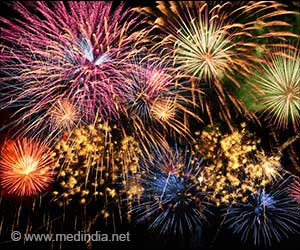Liquid biopsy with ctDNA is a game-changer for multiple myeloma, improving risk stratification and reducing reliance on invasive procedures.

Multiple myeloma is a type of plasma cell cancer that involves the skeleton, exhibits heterogeneity and often spreads beyond the bone marrow. It is characterized by uneven infiltration of plasma cells in the bone marrow and the formation of nodular clusters known as focal lesions (FL).
The focal lesions can be detected using imaging techniques like PET/CT scans. Advances in imaging and molecular tools have improved disease monitoring but invasive bone marrow biopsies remain the standard for assessing disease burden.
Liquid biopsy, particularly through the analysis of circulating tumor DNA (ctDNA), offers a minimally invasive approach to understanding tumor dynamics. The prognostic role of ctDNA in multiple myeloma, its correlation with disease characteristics and its potential to improve risk stratification must be examined.
Enhancing Multiple Myeloma Diagnosis with ctDNA Analysis
Peripheral blood and bone samples from 162 newly diagnosed multiple myeloma patients were analyzed using ultra-low-pass whole-genome sequencing to measure ctDNA levels(1✔ ✔Trusted Source
High level of circulating cell-free tumor DNA at diagnosis correlates with disease spreading and defines multiple myeloma patients with poor prognosis
).
PET/CT imaging and immunofluorescence assays assessed tumor characteristics, microenvironment dynamics, and the role of cancer-associated fibroblasts (CAFs) in ctDNA release.
The study underscores the value of ctDNA as a biomarker for multiple myeloma (MM), demonstrating its strong correlation with tumor burden, disease progression, and the inflammatory tumor microenvironment.
A ctDNA threshold of 12% effectively identified high-risk patients, particularly when integrated with R-ISS scores, improving risk stratification. Higher ctDNA levels indicated greater disease spread and more aggressive features, supported by PET/CT imaging.
Advertisement
CAF-mediated inflammation was linked to higher ctDNA release, driving tumor progression. Despite its promise, the study highlights the need for larger cohorts and advanced methods to address limitations like spatial heterogeneity and refine ctDNA’s clinical application.
This study highlights ctDNA as a reliable, non-invasive biomarker for multiple myeloma. Its use alongside imaging and bone marrow biopsies enhances risk stratification and disease monitoring, reducing the need for invasive procedures and potentially improving patient outcomes.
Advertisement
Reference:
- High level of circulating cell-free tumor DNA at diagnosis correlates with disease spreading and defines multiple myeloma patients with poor prognosis- (https:www.nature.com/articles/s41408-024-01185-6)
Source-Medindia



